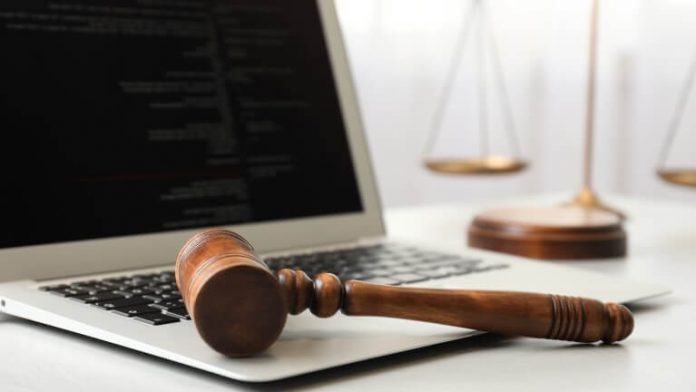This article has been written by Ch. Priyanka, pursuing BA.LLB [hons.] from GITAM University, Visakhapatnam and the article has been edited by Khushi Sharma (Trainee Associate, Blog iPleaders).
Table of Contents
Introduction
India, being one of the largest democracies of the world has the world’s largest constitution that too in a written format making it stand apart from the world countries thus, giving it the right amount of rigidity and flexibility just to adapt it according to the dynamic nature of the society. This law book of India i.e., the constitution has a few features such as the federal system, directive principles of state policy, parliamentary form of government, etc. And one such important feature of this sovereign nation is independence and an integrated form of the judiciary.
India has three organs to govern it; the executive, legislature, and the judiciary. The executive body of government deals with the implementation of policies framed by the legislature; which in India are the prime minister and the parliament respectively. The judiciary is a body of courts pertaining to the jurisdictions which perform the function of the application of laws in case of a breach i.e., a system that resolves the disputes between the citizens in case of an infringement or a breach.
India remains successful as a diverse nation with its democracy and justice intact. But, the dynamic society with its increasing rate of crimes and offences has led to an increase in the filing of cases one after another waiting to get resolved; leaving the parties in a vacuum of delayed injustice. This casts an obligation upon the Indian government to look after these cases and ensure a faster justice. This lockdown scenario which is forced upon us due to the Coronavirus has worsened the situation. Moreover, it has brought us to a deadlock wherein the economy is exhausting, COVID- cases are increasing due to the improper confinement rules and the addition of accumulation of thousands of cases to deal with.
The virtual judicial system
This is where modern technology comes in handy to deal with judicial cases to prevent the gaps in the justice delivery system through the establishment of Virtual courts. A Virtual court means the filing of a suit or a case, its hearing, the court fees, and other formalities will be online, as it will be dealt with by the judicial bodies virtually.
Well, just like a knife has two sides- one to chop vegetables and the other useless, this system of delivering justice through a virtual medium has its own pros and cons.
Overcoming the challenges of coronavirus through practising social distancing and proper sanitizing is not commendable enough by launching the virtual court’s cause, the primary hindrance is the lack of technical knowledge among the citizens. For instance, a person who is financially backwards and is awaiting justice for years may not have access to and knowledge of technology.
Secondly, this virtual justice delivery system is not adopted by all the judicial bodies which in turn means that in some judicial bodies, the situation of excess cases is increasing day by day. This points out the poor implementation and the lack of technical resources to deliver the main feature of the country – justice.
In addition to this, those judicial bodies which adopted these “above the fold” justice delivery systems have prioritized the cases which should be heard. So, this clearly states that the hearing of cases is not going on in order and is left to the discretion of the judicial bodies.
The scenario of physical courts to date has been turned upside down by this pandemic – costing people their time and justice, which necessitates not just the presence of virtual courts but also it is working at a faster rate. And, the successful implementation coupled with the effective working of the virtual courts will reduce the burden of cases leading to faster delivery of justice.
There is a belief that ” A court of Justice is a public forum” and this is satisfied by the physical open courts, as this grants fairness in the application of laws with impartiality and develops public confidence. And this publicity of court trials and open court hearings will ensure proper belief in the judicial system of the country. This cannot be achieved through virtual courts as it is not open to them as in the case of open courts.
Though telecasting hearings or judgments is an option, it is quite difficult for the court to telecast every case hearing. I mean considering the number of cases to be dealt with, it will be vague to search a court hearing of a particular case.
Lastly, for the virtual court proceedings to take place without any disturbance, the prime necessity is a high-speed internet connection with proper electricity. This is not available and feasible everywhere. Cause, the parties who reside in rural areas or those who reside where the network connection is not possible is something that has to be considered for virtual hearings. This is one of the main drawbacks of virtual courts.
Benefits of virtual courts
The first and foremost advantage of the establishment of virtual courts is that it reduces the manpower and the paperwork which is profitable and cost-effective when compared to open courts. This reduces the manpower at the same time, cutting down on miscellaneous expenses of an open court such as electricity,
maintenance, infrastructure, staff, security, etc. It also flattens the huge travel charges of the parties due to the repeated hearings of the cases. The next advantage of these virtual courts is that people can communicate from anywhere, as they can be a part of court proceedings from their homes. This helps in covering a wide range of geographical areas. And parties who are far away from the cause of action can completely attend the court sessions from their regions.
Though there are a few initial hiccups, the system of virtual court hearings would lead to the digitalization of court cases and court management will be more efficient due to the reduced number of paperwork or manual work. As a result, the workflow will be at a good rate. Core eyewitnesses, who should be provided security to attend and provide evidence and statements can give the same through e-courts’ video conferencing method. They need not be afraid of the consequences. Moreover, the e-courts will mitigate the spread of coronavirus; a full-fledged and effective implementation of e-courts will help in eliminating the piling cases, that is, the courthouse traffic will come to a reasonable level and eventually result in a decreased number of cases.
India and virtual courts
In the backdrop of the lockdown situation imposed by the pandemic and to overcome many other challenges by the same, the Supreme court of India has given a few directions to proceed further with the e-court justice delivery system via video conferencing which are given as follows:
● The Supreme Court of India has obligated every High court to continue the functioning of the judicial system by using video conferencing technology.
● The Supreme Court has also directed the district courts to adopt video conferencing technologies as prescribed by the High Court.
● The apex court held that courts should make the necessary facilities available to those who require the same which include the appointment of an ‘amicus curiae.
● It also held that the courts should follow the video conferencing techniques for hearing arguments at the stages of trial as well as appellate.
● It also mentioned that the recording of evidence through video conferencing will be left at the discretion of the parties.
These are the orders of the Supreme Court of India regarding the establishment of e-court systems and are binding upon the lower courts until the next orders of the Supreme Court regarding the same. The first virtual court of India was launched in Delhi’s Tis Hazari Court. After that, a few state high courts like
Telangana, Punjab, Haryana, and Bombay high court issued their measures of virtual court and adopted accordingly.
The world and virtual courts
The world countries are shifting towards these virtual courts with the use of advanced technology. They have evolved and are ahead of us in the concept of virtual courts which gives us an insight. This helps us to understand and prevent future problems. So, to prevent the common issues of technology and resolve them, there comes a necessity of observing the world countries’ strategies and developments in this area.
Many countries like China and the US are following the system of virtual courts in the context of this pandemic outbreak. The UK has also been using the e-court system but from an earlier stage, that is from 2009. The UK judicial officers stated that this system of e-court is beneficial since it has improved the judicial system and the movement of prisoners to the court is cut down. They even stated that the virtual court system is cost-effective. These virtual courts deal with both criminal and civil issues.
China, our neighbouring country, has had a virtual system of courts since 2015. They named it “Robot Justice” which means the internet courts and have quite a different approach when compared to other countries as they have Artificial Intelligence in place which means that the judges are non-human. Surprising, isn’t it? But these have jurisdictional power of ruling only over civil issues.
Conclusion
There are a few perceptions that these modern technologies are a threat to the justice delivery system and some feel that technology is merely gadgets. But, technology should be used in such a way that the system of the judiciary improves and becomes more transparent. The benefit of advanced technology upon proper usage and implementation will lead us to the goal of an integrated judicial system. This is the future of the country as the practice of law will change and the approach to justice will completely change. It is a matter of time that we start understanding our technological hindrances and overcome them thus, improvising the judiciary at the end for the common good. It might be a longshot and yes there are many challenges to achieve a stable system of e-courts, but the only way we can achieve a better future is only when we resolve them. And resolving these issues coupled with effective implementation without any loopholes will bring in a transparent, efficient, and timebound judicial system.
References
- https://www.latestlaws.com/articles/virtual-courts-and-access-to-justice-a-step-forward-for-indian-judiciary
- https://www.legalserviceindia.com/legal/article-3211-virtual-courts-the-new-norm-.html
- https://www.lawctopus.com/academike/virtual-courts-in-india-hearing/
- https://indianexpress.com/article/opinion/columns/virtual-courts-india-parliament-panel-digital-justice-covid-19- impact-6824791/
- https://www.mondaq.com/india/technology/933784/virtual-courts-in-india
- https://www.barandbench.com/columns/virtual-courts-a-sustainable-option
LawSikho has created a telegram group for exchanging legal knowledge, referrals and various opportunities. You can click on this link and join:
https://t.me/joinchat/J_0YrBa4IBSHdpuTfQO_sA
Follow us on Instagram and subscribe to our YouTube channel for more amazing legal content.












